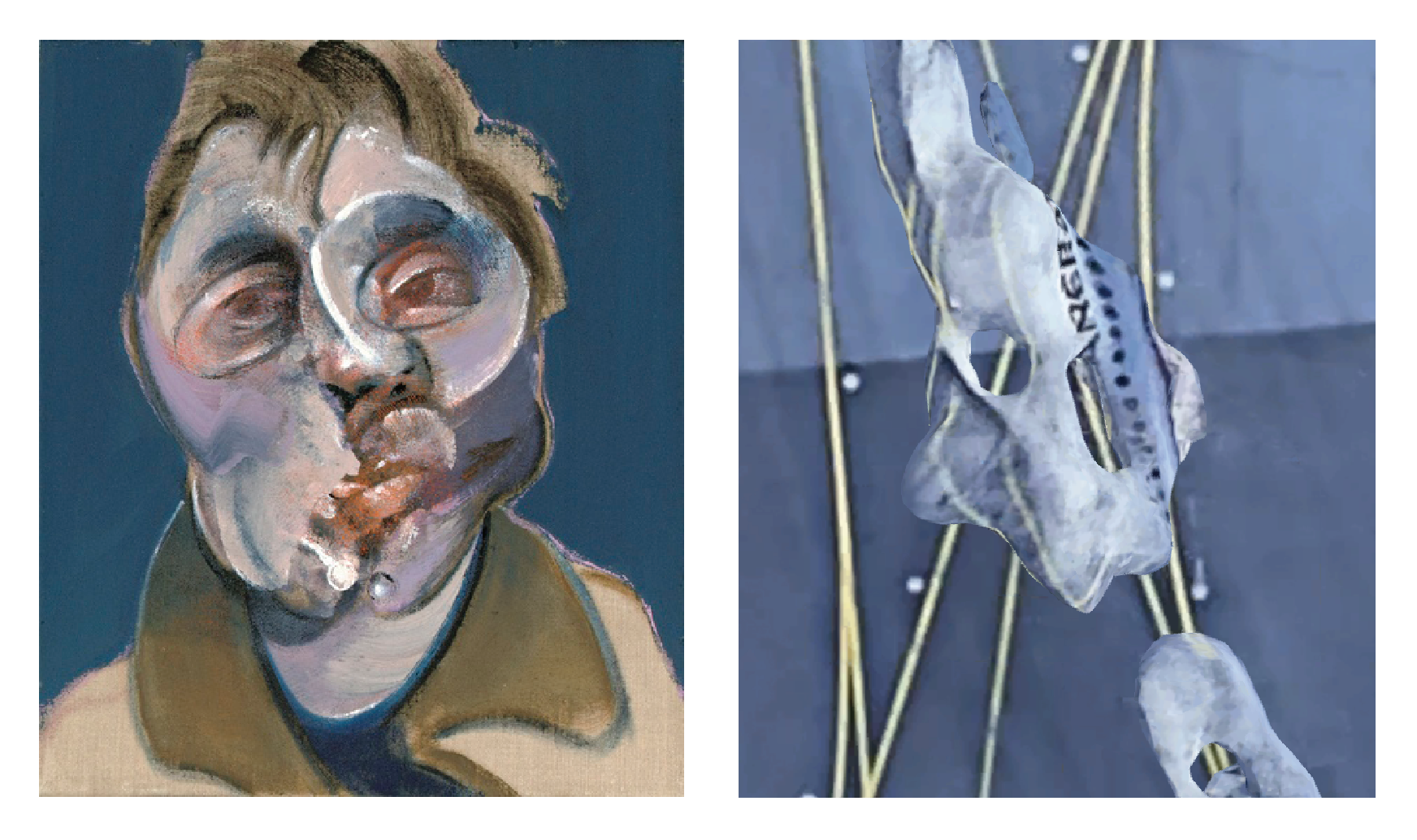When I first cropped one of the screenshots of a plane fading from Charles de Gaulle airport in Paris, I formally connected it with Francis Bacon’s self-portrait. After juxtaposing both images, not only the shapes and the color palette were related: I suspected that there was a possible aesthetic connexion.
Bacon's gaze rests on his face like a brutal hand, trying to keep his essence. The brutal gesture, that movement of the hand, wrinkles the human face, hoping to find in it or behind it or through it something that has been hidden, like the algorithms do with heavy metals and the invisible passengers inside the planes. There is a contrast with the emotional and precise hand of the painter and the futile and systematic cloning style of the algorithm.
Deleuze (2002, p. 58-59) argued that Bacon had created a form of painting in which figures were emptied of all meaning, in which sensation was everything: “the extraordinary agitation of these heads is derived (…) from the forces of pressure, dilation, contraction, flattening, and elongation that are exerted on the immobile head. They are like the forces of the cosmos confronting an intergalactic traveler immobile in his capsule.”
The idea of deformation being subordinated to a body, of movement being subordinated to force and abstract being subordinated to figure described by Deleuze evidenced an aesthetic force in my fading planes.
In both cases, it is as if the bodies, reaching the limit of the barrier, eliminate a part of themselves and push themselves in a frantic attempt to escape from their container space. All that remains at the point of disjunction are circular voids.
︎︎︎ Deleuze, G., 2003 Francis Bacon: The logics of sensation, trans. D W Smith, Continuum, London, UK, original work published 1981.
